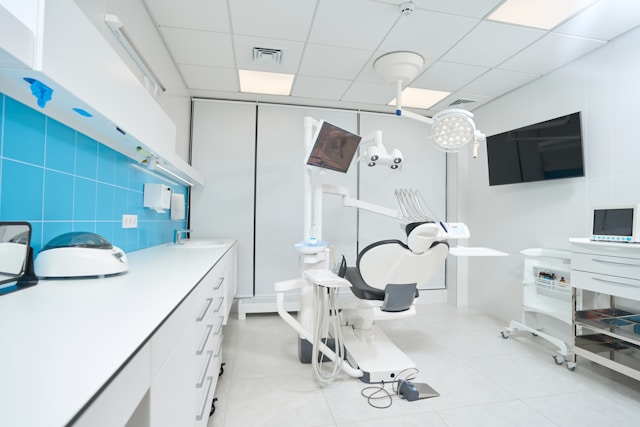What are CPT codes?
The billing process in healthcare can involve a series of steps, and CPT (Current Procedural Terminology) codes are meant to make it uniform. Usually, a five-digit numeric code, CPT codes, are standardized medical code utilized by healthcare practitioners to report services performed and procedures administered to patients. It helps facilitate reimbursement from insurance companies. These codes are crucial in guaranteeing precise patient billing and streamlining healthcare delivery.
Established by the American Medical Association (AMA) in 1966, CPT codes aim to standardize documentation of medical, surgical, and diagnostic services and procedures. AMA has developed CPT codes that are used all over the world. As the healthcare industry changes, these codes can also change.
Each code corresponds to a distinct service, such as an office visit, laboratory test, or surgical intervention. Through the implementation of CPT codes, healthcare providers ensure clarity in the services rendered to insurance companies, thereby enabling the accurate processing of reimbursement claims.
The purpose of Physical Therapy CPT Codes
After injury, clients work with physical therapists for extensive hours, aiming to rehabilitate and strengthen. For this, therapists must be reimbursed for the time invested, allowing them to sustain their practice and continue providing care.
CPT codes offer several purposes for physical therapy. They guarantee insurance companies understand the treatments and facilitate proper reimbursement for physical therapy services.
- Standardized billing documentation: Like in other healthcare sectors, CPT codes help physical therapists convey the specific services provided during therapy sessions. This standardized approach is vital for accurate billing and ensures insurance companies comprehend the treatments administered.
- Treatment specificity: Each CPT code corresponds to a particular physical therapy intervention, such as therapeutic exercise, manual therapy, gait training, or using modalities like ultrasound. Appropriate patient coding allows therapists to document services, facilitating proper reimbursement.
- Time tracking: Certain CPT codes consider the duration of a treatment. For instance, a code for therapeutic exercise might have variations based on the time spent performing those exercises (e.g., 15 minutes vs. 30 minutes). This helps ensure billing accurately reflects the time invested in a patient's care.
Timed vs. Untimed Physical Therapy CPT Codes
Physical therapy CPT codes can be classified into two main types: timed and untimed, each with safety procedures and distinct billing methodologies.
- Timed CPT codes: Reimbursement hinges on the direct, one-on-one time spent performing skilled interventions with the patient.
- Billing: Each code represents a specific time unit (typically 15 minutes), with the "8-minute rule" dictating that a minimum of 8 minutes of therapy must be provided to bill for one unit.
- Examples: Therapeutic exercise (97110), Manual therapy (97112), Neuromuscular reeducation (97113), Electrical stimulation (manual) (97032)
- Untimed CPT codes: Reimbursement is determined by a predetermined fee for the entire treatment session, regardless of the time spent on specific interventions.
- Billing: Billed once per session, regardless of the number of untimed services provided and not associated with a specific time unit.
- Examples: Re-evaluation (97025), Unattended electrical stimulation (97014), Hot/cold pack application (97020)
Physical Therapy CPT Code modifiers
Physical therapy CPT codes often include modifiers, providing extra service details. These modifiers work like notes added to the main code, explaining specific aspects unclear from the code itself. Here are some common modifiers used in the physical medicine procedure and physical therapy evaluation CPT codes:
- Place of service (POS) modifiers: These codes show where the therapy was done, like a hospital, physician's office, or skilled nursing facility.
- Examples:
- 11: Outpatient hospital
- 12: Physician's office
- 22: Skilled nursing facility (SNF)
- Service modifiers: These give more information about the service provided.
- 59: Distinct Procedure - When two unrelated procedures are done in the same session.
- -22: Increased Service - When the service takes more time than usual.
- -52: Reduced Service - When the service takes less time than usual.
- -95: Telehealth Service - When the service is done using telehealth technology.
- -96: Habilitative Service - Improving function due to a congenital, developmental, or acquired issue.
- -97: Rehabilitative Service - For restoring function after an illness or injury.
- Provider modifiers: These identify the healthcare professional who provided the service.
- GO: Licensed Occupational Therapist
- GP: Physical Therapist
- CO: Certified Occupational Therapy Assistant
- CQ: Certified Physical Therapy Assistant
Reference
American Medical Association & American Medical Association. (2020, September 9). CPT® purpose & mission. American Medical Association. https://www.ama-assn.org/about/cpt-editorial-panel/cpt-purpose-mission
Why use Carepatron as your physical therapy software?
Looking for physical therapy software? Look no further than Carepatron! With its comprehensive features, intuitive interface, and time-saving efficiency, you'll streamline your practice quickly.
Carepatron offers seamless appointment scheduling, effortless document management, and enhanced patient engagement, all while ensuring the security of your data. With real-time reporting, you'll have the insights to improve functional performance and make informed decisions, making Carepatron the perfect partner for successful practice management.
Join thousands of healthcare providers who have already experienced the difference. Try Carepatron today!








.webp)



.jpg)






.webp)
.webp)

.webp)
.webp)
.webp)
.webp)
.webp)
.webp)


